

Formative. Valutazione autentica e rubrica. Il solo modo con il quale possiamo giudicare propriamente dove siamo, è legato a dove vogliamo essere (Wiggins G., 1998).
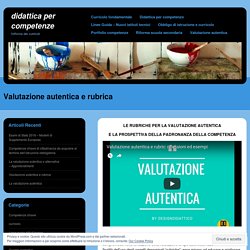
Questa introduzione di uno degli autori più compromessi nella fondazione della valutazione di tipo autentico, riassume anche la finalità dell’uso degli oggetti denominati “rubriche”: esse mirano ad educare e migliorare le prestazioni degli studenti, divenendo altresì una guida nell’essenzialità dei saperi disciplinari. Tendono quindi a superare l’idea di una verifica meramente di controllo sulle attività svolte e sulle conoscenze.
Lo sfondo pedagogico dell’utilizzo delle rubriche è di verificare quanto si è deliberatamente progettato di insegnare e di migliorare, non solo misurare: questa è anche l’essenza della valutazione educativa. Due pilastri sui quali esse si fondano sono il compito autentico (authentic task) e l’amichevole feedback del compito. Affondiamo qui le radici nell’argomento delle competenze di uno studente nell’eseguire un compito complesso. Guamodì Scuola: Schemi e criteri per definire giudizi e voti secondo il D.lvo 62/2017: scarica il materiale elaborato da Franca Da Re. Servizio provinciale di valutazione per l'istruzione e la formazione in lingua italiana.
Didattica per competenze. La valutazione autentica o alternativa si fonda sulla convinzione che l’apprendimento scolastico non si dimostra con l’accumulo di nozioni, ma con la capacità di generalizzare, di trasferire e di utilizzare la conoscenza acquisita a contesti reali.
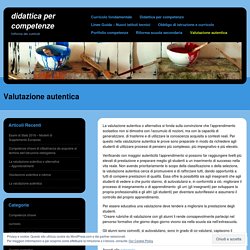
Per questo nella valutazione autentica le prove sono preparate in modo da richiedere agli studenti di utilizzare processi di pensiero più complesso, più impegnativo e più elevato. Valutazione autentica e rubrica. Flipped Classroom - Reflections and Goals - Teaching with Technology. The end of the year is upon us!
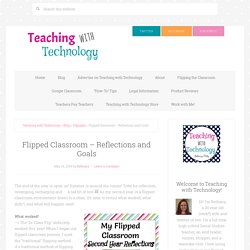
Summer is around the corner! Time for reflection, revamping, recharging and … a tad bit of rest 🙂 As my second year in a flipped classroom environment draws to a close, it’s time to revisit what worked, what didn’t, and what will happen next! Critical Assessment Ideas from PBL World. I had a great time at the PBL World Conference in so many ways: as a presenter, as a panelist, as a listener, as a collaborator, and even as the subject of art.
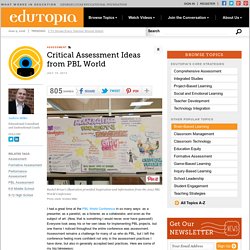
(Now, that is something I would never, ever have guessed!) Everyone took away his or her own ideas for implementing PBL projects, but one theme I noticed throughout the entire conference was assessment. Assessment remains a challenge for many of us who do PBL, but I left the conference feeling more confident not only in the assessment practices I have done, but also in generally accepted best practices. Here are some of my big takeaways: Assess 21st Century Skills. 16 Student Feedback Tools Tutorials. Vicky Saumell: Using rubrics to assess projects. We have been using PBL for 6 years already and one of the most difficult aspects to work on has been assessment.
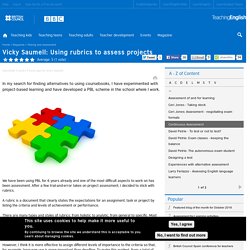
After a few trial-and-error takes on project assessment, I decided to stick with rubrics. A rubric is a document that clearly states the expectations for an assignment, task or project by listing the criteria and levels of achievement or performance. There are many types and styles of rubrics: from holistic to analytic, from general to specific. Most rubrics I have come across give equal weight to all the criteria included in the rubric, with 4 or 5 performance levels for each. These performance levels can be written as full descriptors for each or with generic descriptors for all, such as limited, developing, proficient, advanced, exemplary, or with numbers 1-5. However, I think it is more effective to assign different levels of importance to the criteria so that, for example, language use is more important than deadline. Choice in the Secondary ELT Classroom – Reflections & Suggestions – YLT. Katherine Bilsborough I started thinking about Choice in explicit terms a couple of years ago.

Whenever I’m researching aspects of learning or teaching – for a writing project, a teacher training event, or a blog post, I pause to reflect on what I’m reading, thinking about how it relates to classroom practice. Mirror, Mirror on the Wall: 3 Key Ways Reflection Can Help Your Students Become Better Learners. Valutazione autentica - Rubriche di valutazione. Cerini Dal SNV al RAV. 2013-2014-competenzesup200611. Tessaro Compiti autentici o prove di realta. Tessaro FondamentiValutazione. Laboratorio di Ricerca Educativa Didattica. 1.

La costruzione collegiale del profilo dell’allievo Valutazione scolastica e controllo del profilo formativo (Umberto Margiotta) [download] Il profilo cognitivo dell’allievo. Analisi dei processi di apprendimento (Fiorino Tessaro) [download] Valutazione e compiti di realtà - Tiziano Pera e Sergio Vastarella. How to Evaluate Web Resources. The Internet has given writers in all fields the ability to conduct research more quickly, and more thoroughly, than ever before.
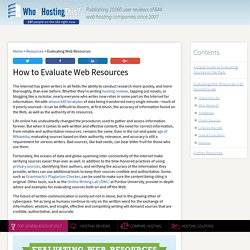
Whether they're writing hosting reviews, tapping out novels, or blogging like a rockstar, nearly everyone who writes now relies in some part on the Internet for information. Tutorial Easel.ly. CERINI 2015 competenze Ca' Foscari. The Formative Assessment Tools Shelf. 5- MED Come valutare un percorso MediaEducativo. Conduce Roberto Trinchero. Authentic Assessment Toolbox Home Page. To the Authentic Assessment Toolbox, a how-to text on creating authentic tasks, rubrics, and standards for measuring and improving student learning.
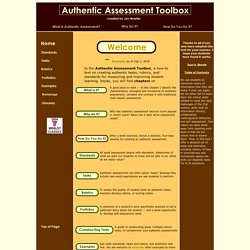
Inside, you will find chapters on. Verifica Formativa. Single-Point-Rubrics. Quality Rubrics / Tools for Writing Rubrics. The first step in writing a rubric is to investigate if the process, product or performance that students will be engaged in deserves a rubric.
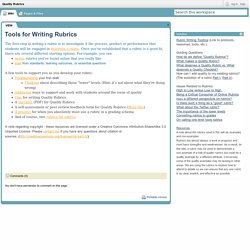
Once you've established that a rubric is a good fit, there are several different starting options. For example, you can: revise rubrics you've found online that you really likestart from standards, learning outcomes, or essential questions. IL QUADRO DELLA SCUOLA ITALIANA FORNITO DAI RAV – ADi. Sul sito dell’INVALSI è disponibile un interessante documento a cura di Donatella Poliandri, I processi ed il funzionamento delle scuole, che è importante esaminare, poiché offre un quadro generale del funzionamento delle scuole nell’a.s. 2014-15 sulla base del Questionario Scuola del RAV, cui hanno partecipato 9522 scuole, cioè complessivamente il 98-99% del totale. La finalità dichiarata è quella di offrire un’analisi di sistema che permetta decisioni politico-amministrative fondate sulla realtà esistente. Di seguito si offre una sintesi commentata. PISA 2015. Nuove note sull’Italia – ADi. Premessa Delle tre aree indagate (Lettura, Matematica e Scienze) gli analisti stessi di PISA hanno sostenuto nel passato che quella di Scienze è la meno significativa, perché si occupa di competenze relative alla capacità di comprensione dei testi già analizzata in Lettura e di ragionamento logico già analizzata in Matematica.
La ragione della sua permanenza nell’indagine sembra essere soprattutto di policy, dovuta alla necessità di incrementare, soprattutto nei paesi OCSE, gli studi scientifico-tecnologici, in crisi fra le scelte dei giovani e non solo in Italia. Tuttavia l’introduzione, grazie alla somministrazione informatica, di prove interattive finalizzate a registrare le competenze nel campo della realizzazione di attività sperimentali, potrebbe garantire un nuovo e più alto interesse alle rilevazioni in questo campo. Analisi secondarie sui risultati di questo tipo di prove potranno darci una risposta in questo senso.
“VALUTARE PER MIGLIORARE LE SCUOLE” – ADi. B. Fiore, T. Pedrizzi (a cura di), Valutare per migliorare le scuole, Mondadori Università, Milano, 2016, p.299. Rubrics Made Easy With Google Forms. Use Google Forms to Create Automated Rubrics Select Grid or Scale Questions in the Form For the Scale Questions:For the Scale type question, begin with adding a SECTION HEADER. I like this better because you can identify your points value for your scale here.After you have created the Section Header, Add the SCALE QUESTION.When you add the Scale Question, don't worry about adding a question here-you have done this in the section header.
Welcome to the Mathematics Assessment Project. Assessment. DirectPoll - Instant Polling & Real-Time Visualization. Applicazione pratica delle rubric. Home of free rubric tools: RCampus. Welcome to iRubric iRubric is a comprehensive rubric development, assessment, and sharing tool.
1296595310 3 FT0 gr compiti di prestazione gen 11. Corso D didattica per competenze - IDsummerJesi2016. 10 11 rubriche valutative. Castoldi 2013 IL RUOLO DEI PROCESSI AUTOVALUTATIVI. Competenze. AT - Brescia » Valutazione. Referente provinciale: Daria Giunti Recapiti: e-mail daria.giunti@istruzione.it – telefono ufficio 030 2012 285 Su questa pagina vengono pubblicati gli interventi degli esperti che da due anni accompagnano la formazione di dirigenti e docenti sugli aspetti nodali messi a tema dal DPR 80/2013 (Regolamento sul sistema nazionale di valutazione in materia di istruzione e formazione) e ora riproposti dalla Direttiva Ministeriale 11 del 18 settembre 2014 e dalla CM 47 del 21 ottobre 2014.
Presentazione del 1° Rapporto Provinciale sulle Prove Invalsi a.s. 2014-2015 Presentazione del Prof. Mario Castoldi incontro 4 novembre 2015 Materiali di Damiano Previtali del 19 ottobre 2015 Materiali del 6 ottobre 2015: a cura dell’Ispettore Giancarlo Cerini Materiali dell’incontro del 24 febbraio 2015 con il Prof. Dentro le prove INVALSI: Quadro di riferimento delle prove di Lingua Italiana Dentro le prove INVALSI: Quadro di riferimento delle prove di Matematica. Cómo construir Rúbricas o Matrices de Valoración. ¿QUÉ SON LAS RÚBRICAS? Una Matriz de Valoración (Rúbrica – Rubric, en inglés [1]) es un instrumento que facilita la evaluación del desempeño de los estudiantes, especialmente, en temas complejos, imprecisos o subjetivos.
Este instrumento podría describirse como una matriz de criterios específicos que permiten asignar u otorgar un valor (valorar), basándose en una escala de niveles de desempeño y un listado de aspectos que evidencian el aprendizaje, los conocimientos y/o las competencias alcanzadas por el estudiante en un tema particular. I nostri Portfolio Digitali. Valutare. Three Ways that Formative Assessment Supports the Intervention Process. Formative assessment is a teaching tool that supports all learners, but it is especially critical for students who are struggling, as it holds the potential for changing the learning outcome.
I remember this well because Ms. Connie Wambold, a very wise professor and mentor from my speech-language pathology program, always pointed out: “If you want them to be successful, then you have to show them what they are doing right and what they are doing wrong.” I knew that these were true words because Ms. Wambold demonstrated their effectiveness as she immediately reinforced and corrected my understanding of phonetics. (This is a personal learning journey that I shall save for another time.) As Ms. Take Three! 55 Digital Tools and Apps for Formative Assessment Success.
There is no shortage of strategies, techniques, and tools available to teachers who use formative assessment in their classrooms. Assessment Tools. Didattica, valutazione e certificazione di competenze. Formative Assessment: The Secret Sauce of Blended Success. A few weeks ago, a colleague emailed me about some trouble she was having with her first attempt at blended instruction. Assessment tasks. Pupils are asked to choose the best trip using survey data and then cost it. Suitability.
Professional development. Self-assessment by pupils is an essential component of formative assessment - especially when the focus of the assessment is on Key Processes. This module encourages discussion of the following issues: How can we help pupils to become aware of the Key Processes? How can pupils take more responsibility for their own learning?